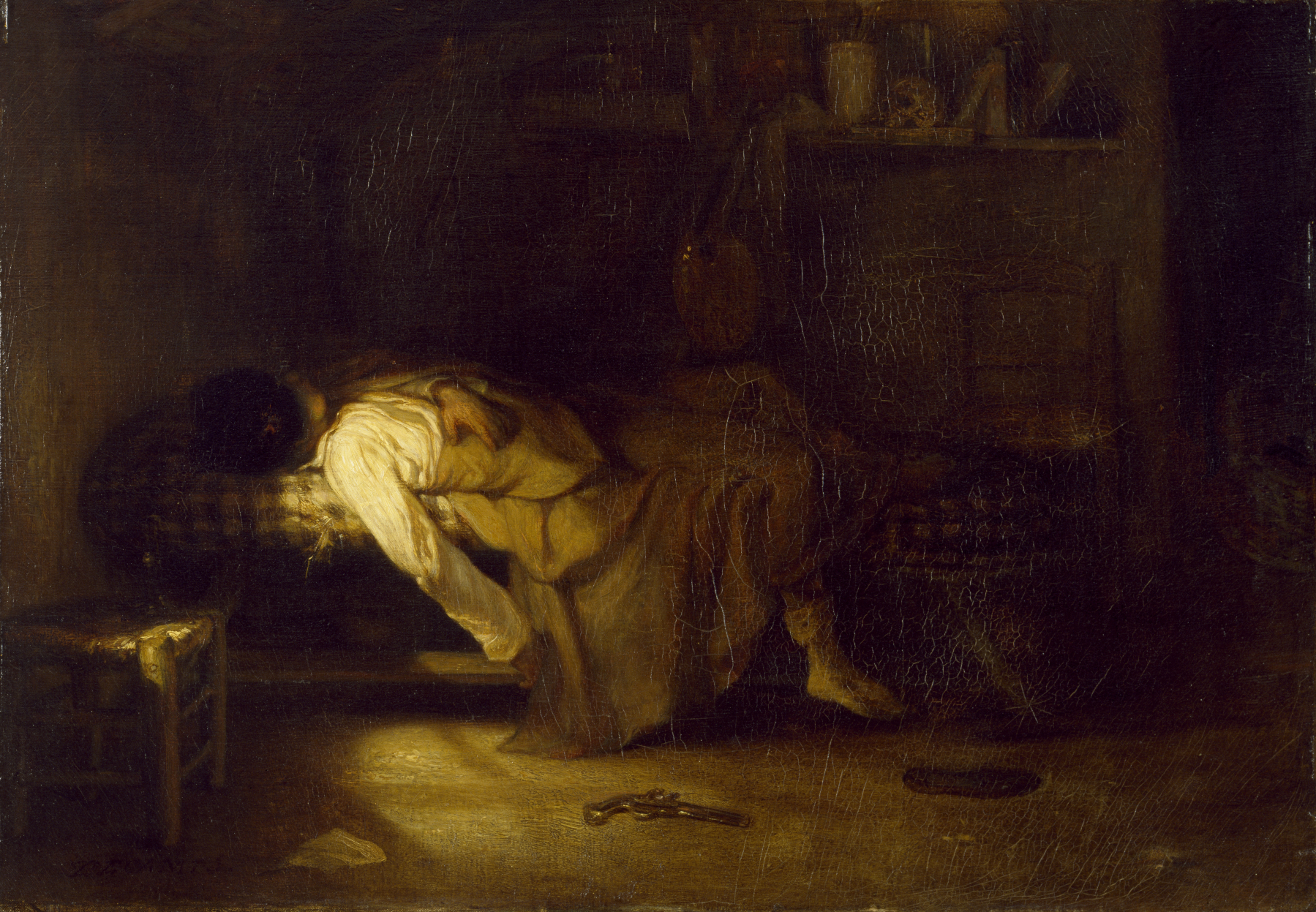 |
| The Suicide, Alexandre-Gabriel Decamps, 1836 |
Our bodies will be hung: with every one
Fixed on the thornbush of its wounding shade.
-- Inferno, Dante, Canto XIII
Suicide is the tenth leading cause of death in the United States as of 2007, right after, oddly, nephritis (an inflammation of the kidneys), but it certainly receives more press than kidney disease. The ranks of the suicides in Dante’s Inferno are growing year by year, and more thorny trees sprouting in the seventh circle. Here, Alexandre-Gabriel Decamps’ The Suicide depicts an artist who decided to end it all, his face shrouded in shadow. The dark, gloomy atmosphere of the painting weighs heavily on the viewer’s mind, calling to mind the dark consequences of such an act.
Christian theology firmly opposes suicide. In Corinthians, potential suicides are admonished with “Do you not know that your body is a temple of the Holy Spirit... You are not your own, you were bought at a price. Therefore honor God with your body” (1 Corinthians 6:19-20). Dante’s famous contrapasso method for determining sin and punishment gives the suicides’ fate as becoming trapped within thorny, tough trees and bushes, boughs constantly broken by nesting harpies. The sinners they share the circle with the profligates, as they run from the black dogs that hound them through the forest. The dark, brooding atmosphere of the ring echoes the mindset of gloom and self-doubt that leads many to self-harm. As a final punishment, when the souls regain their bodies on the day of judgement, they may not inhabit them again, “for justice must forbid / Having what one has robbed oneself of." Instead, the corpses will hang from the trees and bushes of the macabre wood, like a particularly tasteless haunted house.
Decamps was perhaps inspired in this work by the death of his contemporary Léopold Robert, whose paintings were harshly criticized and who took his own life in 1835. The painting, in shades of sepia and brown, gives a mere suggestion of detail in the background, and brings the shoulder of the dead man forward in stark, chiaroscuro-like contrast. A shelf of art supplies is visible, including a palette, and the gun used to do the deed sits in a weak patch of sunlight from an unseen window, with the artist’s outflung hand leading the eye to it in an almost accusatory fashion. The gloomy, brooding nature of the painting, as well as the events inspiring it, provoked a wave of discourse on the harshness of artistic criticism and the melancholy tendencies of artists, perhaps partly as a result of said harshness.
So, please be nice to artists. We need not have them transforming themselves into shrubbery.













